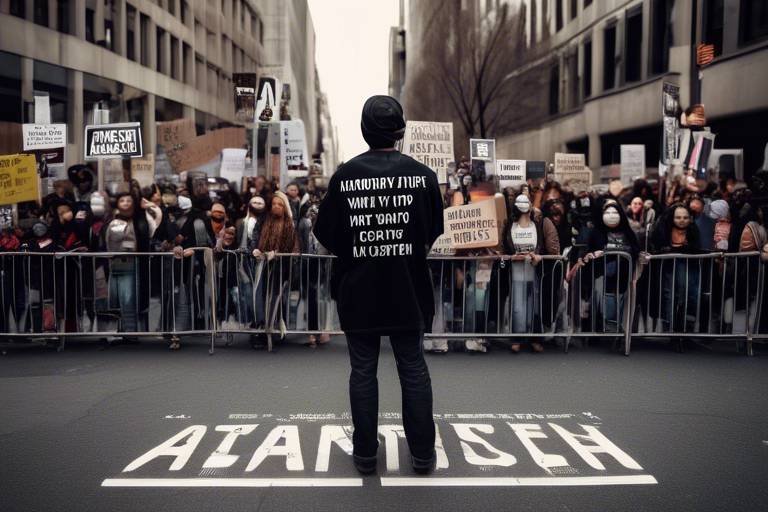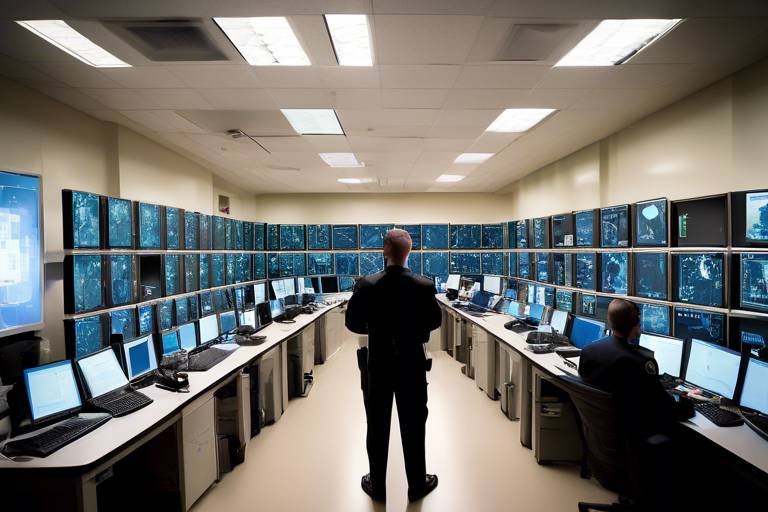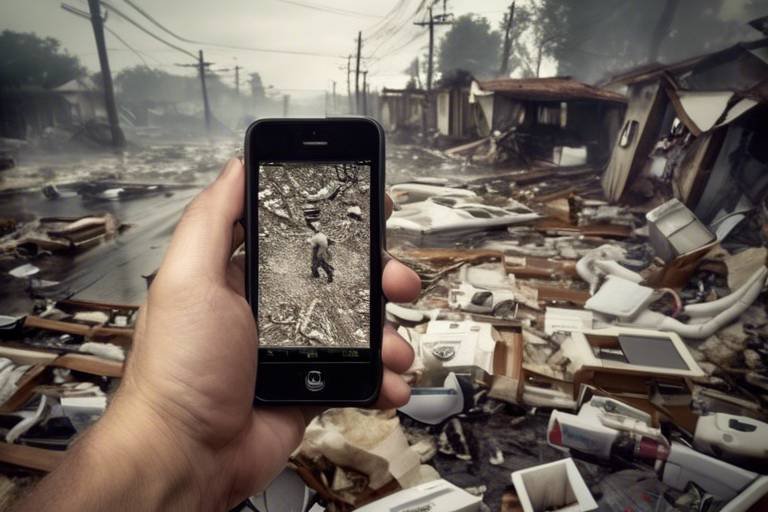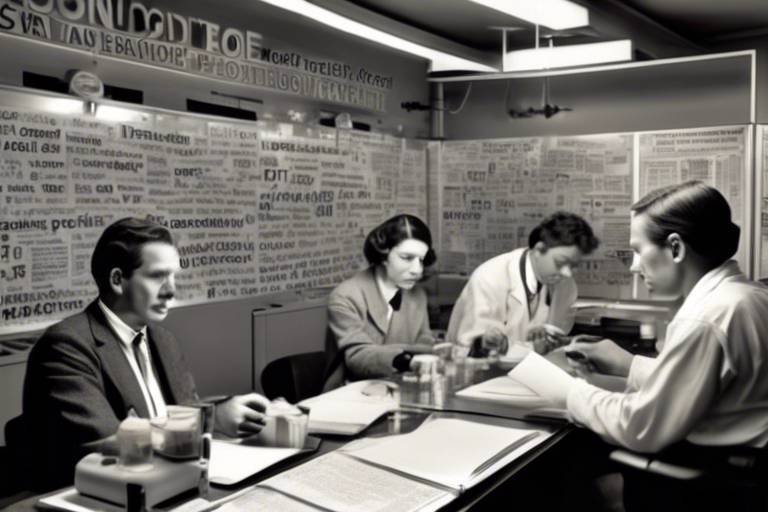The Effects of Social Media on Interpersonal Skills
In today's fast-paced digital world, social media has become an integral part of our daily lives, shaping how we communicate and connect with others. The influence of platforms like Facebook, Twitter, Instagram, and TikTok extends beyond mere entertainment; they significantly affect our interpersonal skills. But what does this mean for us? Are we becoming better communicators, or are we losing touch with the essence of human interaction? This article delves into the profound effects of social media on our ability to communicate and form relationships, highlighting both the positive and negative impacts that arise in various contexts.
Let's start on a high note! Social media can actually enhance interpersonal skills in several remarkable ways. For one, it facilitates communication, breaking down geographical barriers and allowing people to connect with friends, family, and even strangers from all corners of the globe. Imagine having a conversation with someone halfway around the world! This connectivity is particularly beneficial for younger generations who are adept at navigating these digital landscapes. They can share ideas, collaborate on projects, and engage in discussions that broaden their perspectives. Additionally, social media platforms provide ample opportunities for self-expression, enabling users to showcase their creativity and individuality. This can foster a sense of belonging and community, enhancing social bonds.
However, it's not all sunshine and rainbows. While social media offers numerous benefits, it can also hinder face-to-face interactions. The convenience of texting or messaging often leads to a decline in in-person conversations, which are crucial for developing essential social skills. Have you ever noticed how awkward it feels to have a conversation with someone after only communicating through screens? This reliance on digital communication can diminish our ability to read non-verbal cues, such as body language and facial expressions, which are vital for effective communication. Furthermore, the asynchronous nature of social media can lead to misunderstandings and unresolved conflicts, as the immediacy of in-person interactions is lost.
The decline in face-to-face interactions is a significant concern. Social media may offer a platform for communication, but it often reduces the quality of those interactions. In-person conversations allow for a richer exchange of ideas and emotions, fostering deeper connections. When we communicate through screens, we miss out on the subtleties that come with physical presence. This can lead to feelings of isolation, as individuals may feel less connected to those around them. The irony is that while social media connects us to many, it can simultaneously create a sense of distance from those who are physically present.
Understanding body language is vital for effective communication. It's like the unspoken language that conveys emotions and intentions. Social media often lacks these non-verbal cues, which can lead to misinterpretations and reduced empathy in conversations. For example, a simple text message can be interpreted in numerous ways depending on the recipient's mood or context. This ambiguity can create confusion and frustration, ultimately affecting relationships.
In-person interactions often require immediate conflict resolution skills, which can be stunted by the asynchronous nature of social media communication. When disagreements arise online, individuals may take longer to respond, leading to unresolved issues and misunderstandings. This delay can escalate conflicts and create a toxic environment where communication breaks down. Without the ability to read facial expressions or hear vocal tones, the essence of the discussion can be lost, making it challenging to find common ground.
On a brighter note, social media can create virtual communities that support interpersonal skills development. These platforms allow individuals to engage with diverse perspectives and build relationships across geographical boundaries. Online communities can provide a safe space for people to share experiences, seek advice, and learn from one another. The ability to connect with like-minded individuals fosters a sense of belonging and encourages personal growth.
The influence of social media on empathy is complex. On one hand, it can promote understanding and awareness of different cultures and experiences, allowing users to develop a broader perspective. On the other hand, excessive exposure to online content can lead to desensitization towards others' experiences and emotions. The challenge lies in balancing our digital interactions with real-life connections.
Digital interactions can foster a sense of empathy through shared experiences, but they often lack the depth of real-life connections. It's like comparing a photograph to a painting; both can evoke emotions, but the nuances of a painting often tell a deeper story. When we engage with others online, we may feel empathy for their struggles, yet this connection can remain superficial without the richness of face-to-face communication.
Some platforms actively promote empathy by encouraging users to share personal stories. This creates a space for emotional connection and understanding among individuals from varied backgrounds. By sharing experiences, users can cultivate a sense of community and support, fostering a more empathetic online environment. However, it's essential to remain mindful of the potential pitfalls and strive for a balance between digital and real-life interactions.
- How does social media affect communication skills? Social media can both enhance and hinder communication skills by facilitating connections but reducing face-to-face interactions.
- Can social media improve empathy? Yes, social media can promote empathy by allowing users to share personal experiences, but it can also lead to desensitization.
- What are the risks of relying on digital communication? Relying too much on digital communication can diminish the ability to read non-verbal cues and resolve conflicts effectively.
- How can I improve my interpersonal skills while using social media? Balance your online interactions with in-person conversations, and be mindful of the nuances that come with face-to-face communication.
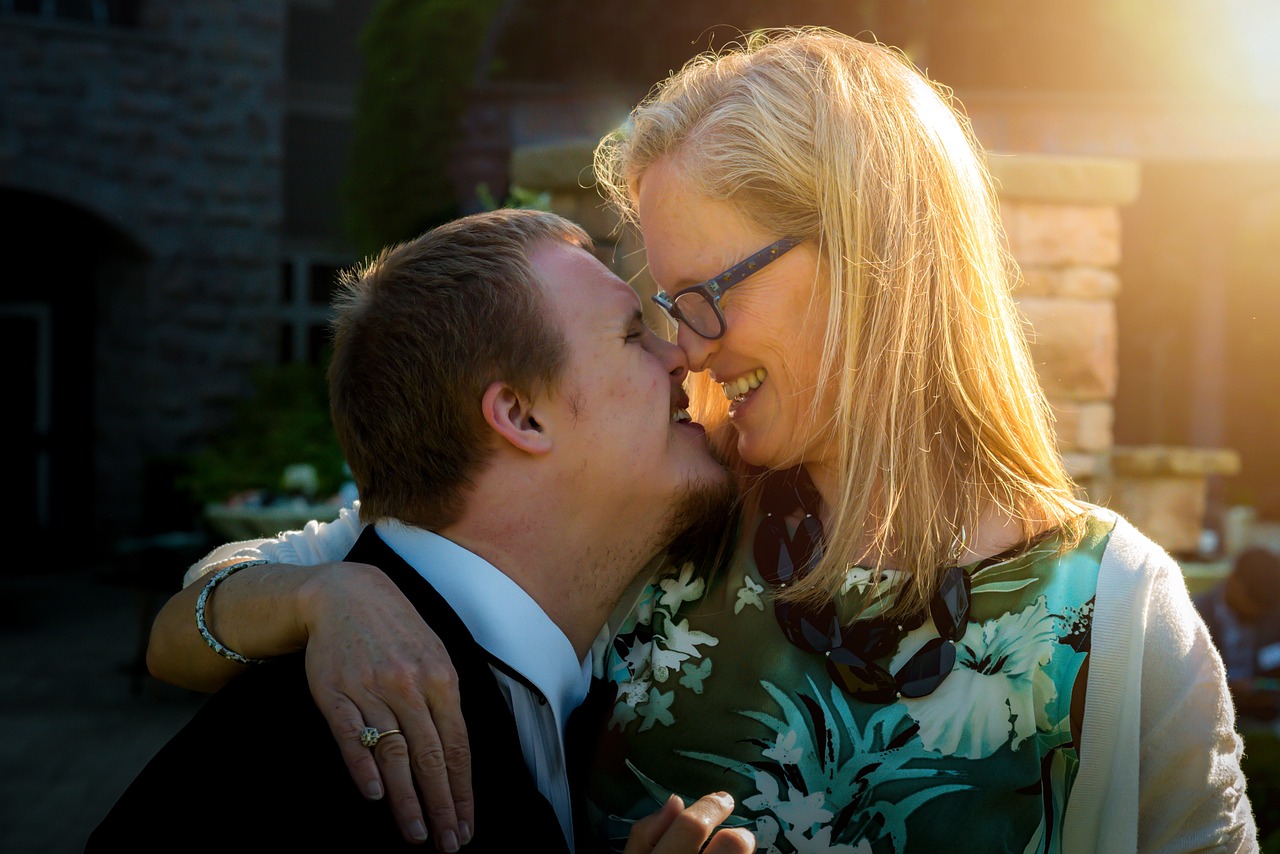
Positive Impacts of Social Media
Social media has revolutionized the way we communicate, making it easier than ever to connect with others. For many, especially younger generations, these platforms serve as a lifeline to friends, family, and even strangers who share similar interests. Imagine being able to reach out to someone halfway across the world with just a click! This ability to connect fosters a sense of community and belonging that can enhance our interpersonal skills in profound ways.
One of the most significant benefits of social media is its capacity to facilitate communication. Unlike traditional forms of communication, social media allows for real-time interactions, enabling users to engage in conversations anytime, anywhere. This constant connectivity encourages individuals to express themselves more freely, enhancing their ability to articulate thoughts and feelings. It's like having a megaphone for your ideas, allowing them to resonate with a broader audience.
Moreover, social media platforms often provide a safe space for self-expression, particularly for those who may struggle with face-to-face interactions. For example, shy individuals can share their thoughts in writing or through creative content without the immediate pressure of in-person communication. This can lead to increased confidence and improved social skills over time. In fact, many users report that social media has helped them develop their voice and engage in conversations they might otherwise avoid.
Another positive aspect is the ability to build and maintain relationships regardless of geographical barriers. Social media transcends physical distance, allowing friends and family to stay connected no matter where they are in the world. This connectivity can be especially beneficial for individuals who move frequently or for those who have family members living abroad. It's like having a digital bridge that keeps relationships alive, providing a platform for sharing experiences, memories, and milestones.
Furthermore, social media can serve as a powerful tool for networking and professional development. Platforms like LinkedIn allow users to connect with industry professionals, share insights, and even collaborate on projects. This not only enhances one's professional skills but also cultivates a sense of community among peers. In a world where networking is crucial, social media makes it easier to forge connections that can lead to career opportunities.
In conclusion, while there are notable concerns regarding social media's impact on interpersonal skills, it undeniably offers several positive effects. From enhancing communication and self-expression to fostering connections across the globe, social media can be a powerful ally in developing our interpersonal skills. As we navigate this digital landscape, it's essential to recognize and harness these benefits while remaining mindful of the challenges that come with it.
- How does social media improve communication skills? Social media encourages real-time interactions and self-expression, which can enhance users' ability to articulate their thoughts and feelings.
- Can social media help shy individuals? Yes, social media provides a platform for shy individuals to express themselves without the immediate pressure of face-to-face communication, often leading to increased confidence.
- Is networking on social media effective? Absolutely! Platforms like LinkedIn facilitate connections with industry professionals, fostering networking opportunities that can lead to career advancements.
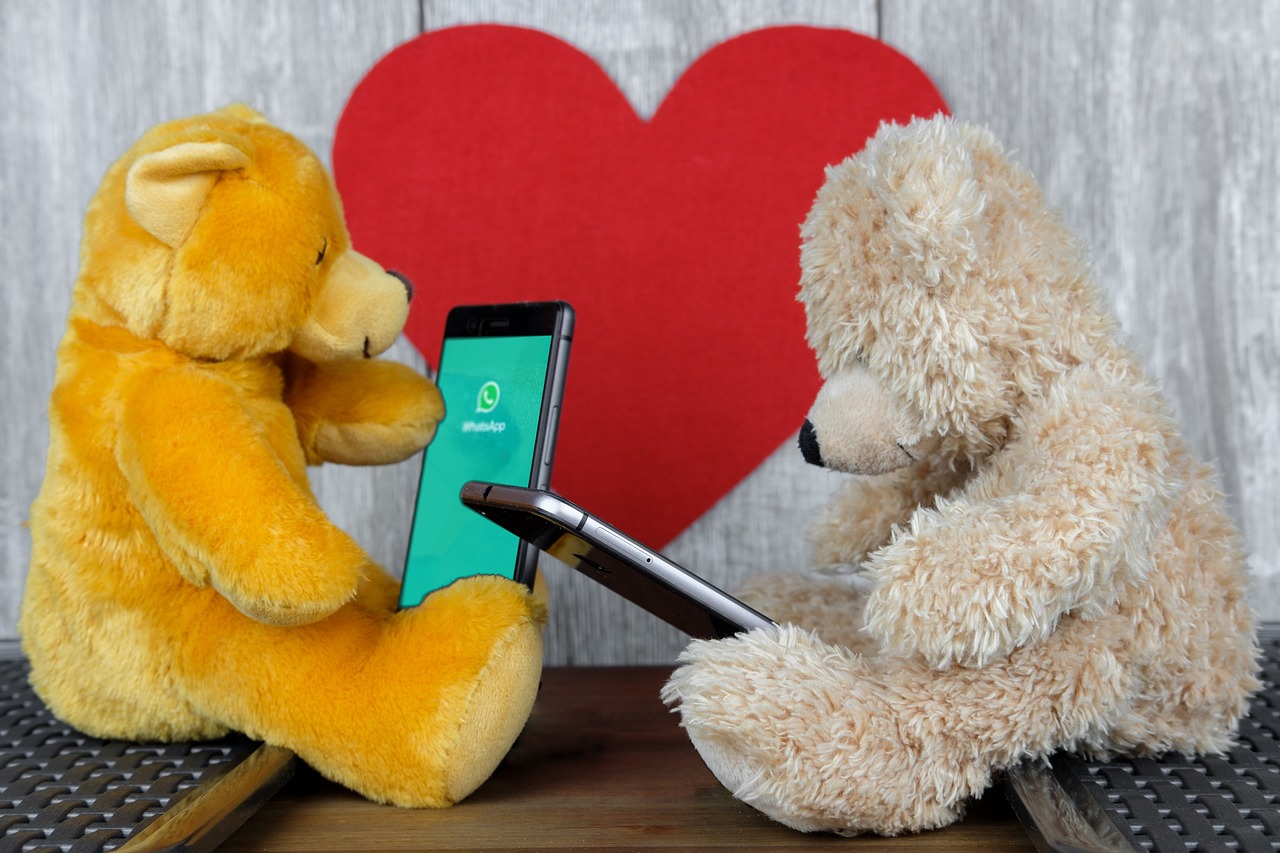
Negative Impacts of Social Media
While social media has undoubtedly transformed the way we communicate, it also brings along a host of challenges that can negatively impact our interpersonal skills. One of the most significant drawbacks is the reduction in face-to-face communication. When individuals rely heavily on digital platforms, they miss out on the rich, nuanced interactions that come with in-person conversations. Think about it: how many times have you noticed someone scrolling through their phone instead of engaging with the people around them? This reliance on screens can lead to a decline in essential social skills, such as reading body language and understanding emotional cues.
Moreover, the asynchronous nature of social media can complicate conflict resolution. In real-life scenarios, we often have to address misunderstandings immediately, using our social skills to navigate emotions and tensions. However, with social media, the delay in responses can foster unresolved issues, as individuals may avoid confrontation or fail to communicate effectively. This can create a cycle of miscommunication, where problems fester instead of being resolved, ultimately affecting relationships.
When we engage through social media, we often sacrifice the richness of in-person interactions. Body language, tone of voice, and facial expressions are all critical components of effective communication. Without these non-verbal cues, messages can easily be misinterpreted. For example, a sarcastic comment might be taken literally in a text message, leading to confusion and potential conflict. This lack of clarity can diminish empathy and understanding, as individuals struggle to grasp the full context of a conversation.
Understanding body language is vital for effective communication. Research shows that a significant portion of our communication is non-verbal. In social media interactions, we often miss out on these cues, which can lead to misinterpretations. When you can't see someone’s facial expressions or gestures, how can you truly understand their feelings? This gap can create a barrier to genuine connection, making it harder for people to empathize with one another.
In-person interactions often require immediate conflict resolution skills, which can be stunted by the asynchronous nature of social media communication. For instance, if a disagreement arises, the ability to address it face-to-face allows for immediate feedback and emotional engagement. Conversely, when conflicts are handled through text or social media posts, the lack of real-time interaction can lead to unresolved issues and misunderstandings. This can escalate problems, as individuals may feel frustrated or unheard, leading to further complications in their relationships.
Despite these challenges, it's important to recognize that social media can also create virtual communities that support interpersonal skills development. These platforms allow individuals to engage with diverse perspectives and build relationships across geographical boundaries. However, the question remains: can these online connections truly replace the depth and richness of face-to-face interactions? While they can foster a sense of belonging, they often lack the emotional depth that comes from in-person experiences.
In conclusion, while social media offers numerous benefits, it is essential to be aware of its negative impacts on interpersonal skills. By understanding these challenges, we can strive to find a balance between our online interactions and the invaluable connections formed in the real world.
- How does social media affect communication skills? Social media can diminish face-to-face communication skills, leading to misunderstandings and reduced empathy.
- Can social media enhance relationships? Yes, it can foster connections, but it often lacks the depth of in-person interactions.
- What are the risks of relying on digital communication? Relying on digital communication can hinder conflict resolution and lead to feelings of isolation.

Reduced Face-to-Face Communication
In today's fast-paced digital world, the reliance on social media for communication has become a double-edged sword. While it allows us to connect with friends and family across vast distances, it often comes at the cost of our face-to-face interactions. Have you ever noticed how easy it is to send a quick text or a social media message instead of picking up the phone or meeting someone in person? This shift in communication style can significantly impact our interpersonal skills.
One of the most critical aspects of effective communication is the ability to engage in in-person conversations. These interactions help us develop essential social skills, such as reading body language and understanding non-verbal cues. However, with the rise of social media, many individuals, especially younger generations, are losing out on these vital experiences. The ability to interpret facial expressions, gestures, and tone is crucial for building rapport and fostering genuine connections. When we rely heavily on digital communication, we miss out on these nuanced aspects of human interaction.
Moreover, the asynchronous nature of social media communication can lead to misunderstandings and conflicts that might have been easily resolved in person. When we communicate through screens, the immediacy of face-to-face conversations is lost. Imagine trying to resolve a disagreement through a series of texts—without the benefit of seeing the other person's reaction, it's easy to misinterpret their intentions or emotions. This can lead to a cycle of unresolved issues, which may further deteriorate relationships.
Additionally, as we become more accustomed to digital interactions, we may find ourselves feeling awkward or anxious in real-life situations. The longer we avoid face-to-face communication, the more challenging it can become. This phenomenon is akin to learning to ride a bike; if you don't practice, you might forget how to balance. The same goes for interpersonal skills—without regular practice, we risk losing our confidence and ability to engage meaningfully with others.
In conclusion, while social media offers a convenient way to stay connected, it is essential to recognize the value of face-to-face communication. By making a conscious effort to engage in more personal interactions, we can enhance our interpersonal skills and foster deeper, more meaningful relationships. After all, nothing can truly replace the warmth of a smile or the comfort of a hug, can it?
- How does social media affect my ability to communicate?
Social media can enhance communication by providing platforms for interaction, but it may also reduce the quality of face-to-face conversations and hinder the development of essential social skills. - Can I improve my interpersonal skills despite using social media?
Absolutely! Engaging in face-to-face interactions, joining clubs, or participating in community events can help you develop and maintain your interpersonal skills. - What are some ways to balance online and offline communication?
Set aside time for in-person meetings, limit your screen time, and prioritize meaningful conversations with friends and family to create a healthy balance.
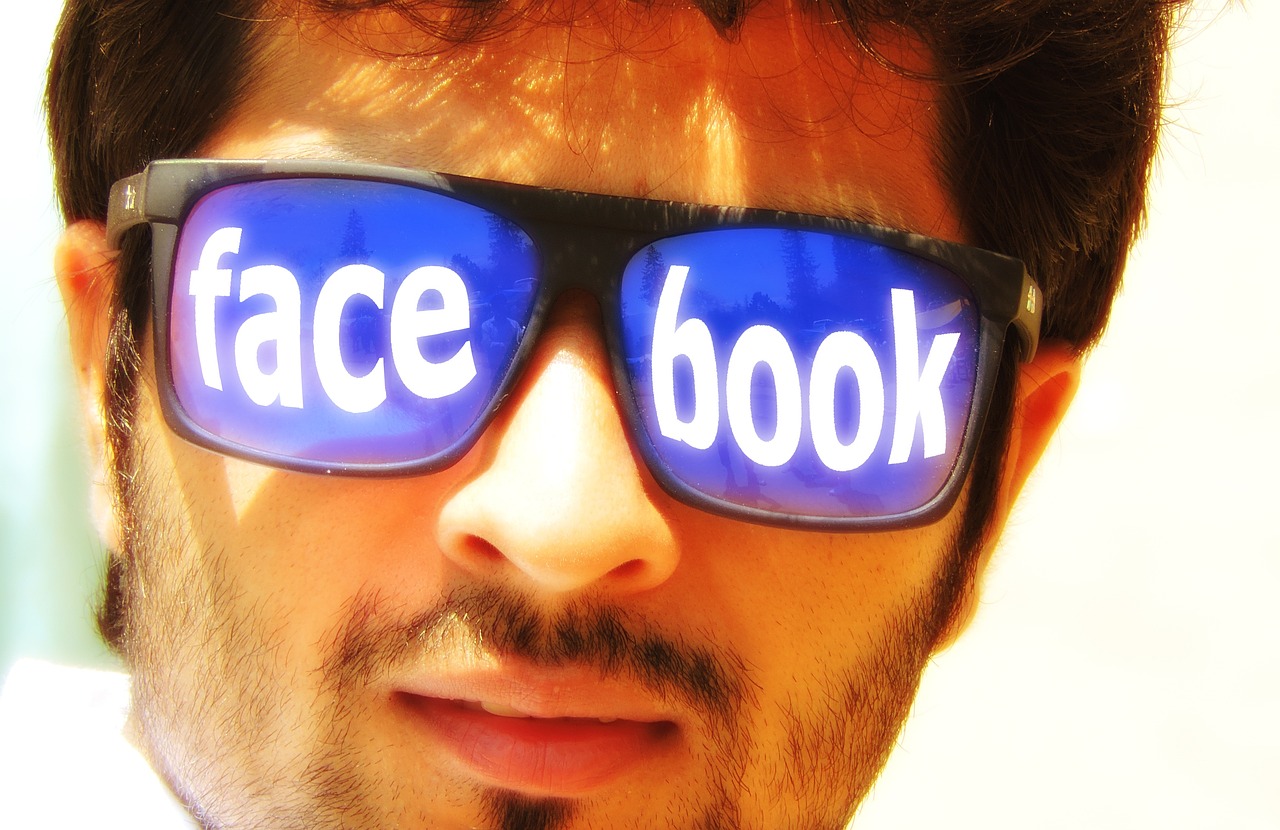
Body Language and Non-Verbal Cues
This article explores how social media influences our ability to communicate and form relationships, examining both positive and negative impacts on interpersonal skills in various contexts.
Social media can enhance interpersonal skills by facilitating communication, fostering connections, and providing platforms for self-expression, particularly among younger generations who are adept at navigating these digital landscapes.
While social media offers benefits, it can also hinder face-to-face interactions, lead to misunderstandings, and contribute to feelings of isolation, ultimately affecting users' interpersonal skills and emotional well-being.
The reliance on digital communication can diminish opportunities for in-person interactions, impacting the development of crucial social skills and the ability to read non-verbal cues effectively.
Understanding body language is vital for effective communication. In face-to-face interactions, we naturally pick up on various non-verbal cues such as facial expressions, gestures, and posture. These cues convey emotions and intentions that words alone often fail to express. However, social media often lacks these essential elements, which can lead to misinterpretations and reduced empathy in conversations. For example, a simple text message may be perceived as harsh or indifferent without the accompanying smile or tone of voice that would typically soften the message in person.
This absence of non-verbal communication can create a disconnect between individuals, making it challenging to form genuine connections. When we rely heavily on platforms like Facebook, Twitter, or Instagram, we miss out on the nuances of human interaction. Here’s a breakdown of some key non-verbal cues that are often overlooked in digital communication:
- Facial Expressions: A smile can convey warmth, while a frown might indicate displeasure.
- Gestures: Hand movements can emphasize points or express emotions.
- Posture: How we carry ourselves can indicate confidence or insecurity.
- Eye Contact: Engaging with someone’s gaze fosters connection and trust.
Without these cues, misunderstandings can easily arise, leading to conflicts that might not have occurred in an in-person setting. Imagine trying to resolve a disagreement solely through text; the absence of immediate feedback can cause frustration and escalation of the issue. This is where the importance of developing strong conflict resolution skills becomes apparent. In-person interactions often require quick thinking and the ability to read the room, skills that can be stunted by the asynchronous nature of social media communication.
Social media can create virtual communities that support interpersonal skills development, allowing individuals to engage with diverse perspectives and build relationships across geographical boundaries.
The influence of social media on empathy is complex; while it can promote understanding and awareness, it may also lead to desensitization towards others' experiences and emotions.
Digital interactions can foster a sense of empathy through shared experiences, but they often lack the depth of real-life connections, potentially leading to superficial relationships.
Some platforms actively promote empathy by encouraging users to share personal stories, creating a space for emotional connection and understanding among individuals from varied backgrounds.
Q: How does social media impact our ability to communicate effectively?
A: Social media can enhance communication by providing various platforms for expression, but it can also hinder effective communication due to the lack of non-verbal cues.
Q: Can social media improve empathy?
A: Yes, social media can promote empathy by allowing users to share personal stories and experiences, fostering a sense of connection.
Q: What are the main drawbacks of relying on social media for communication?
A: The main drawbacks include reduced face-to-face interactions, misunderstandings due to lack of non-verbal cues, and potential feelings of isolation.
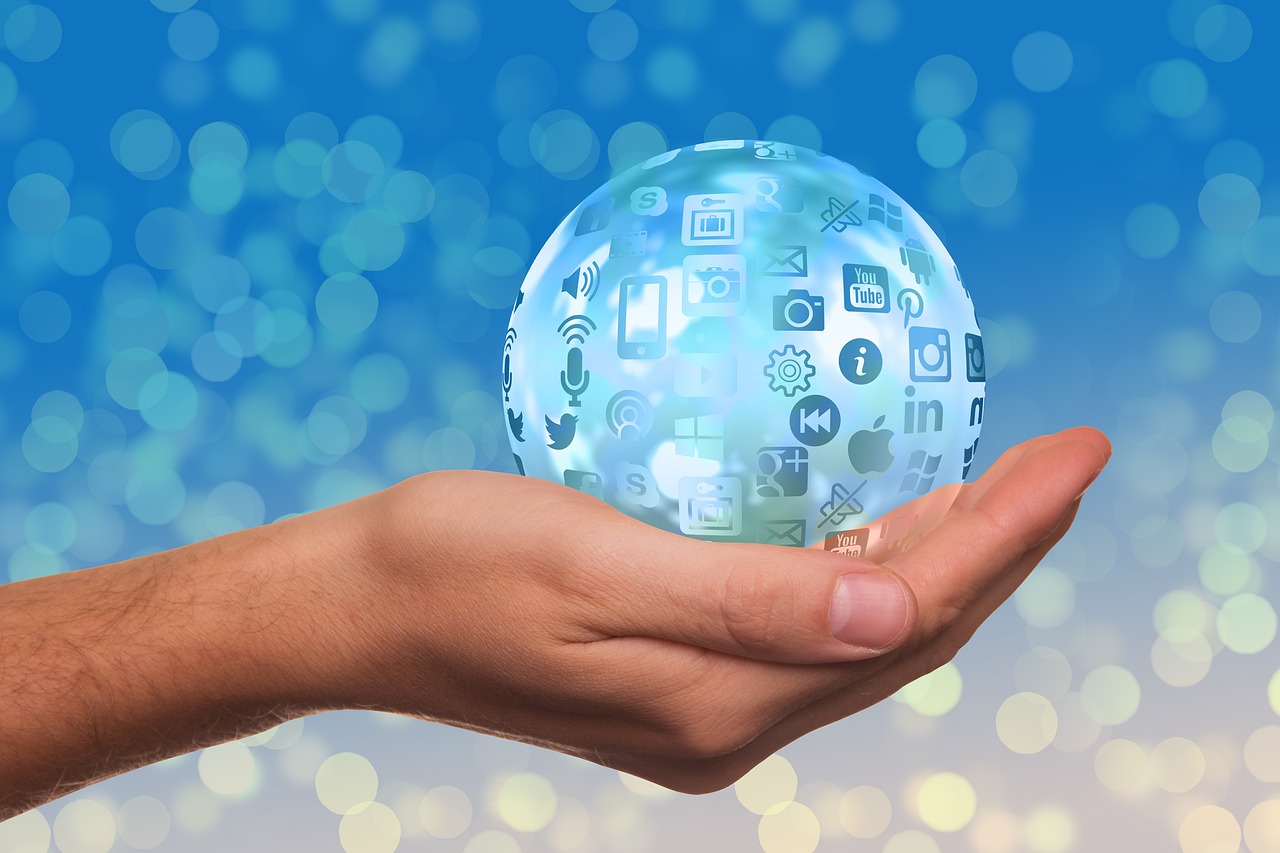
Conflict Resolution Skills
Conflict resolution skills are essential in today's fast-paced world, especially when it comes to interpersonal relationships. The ability to navigate disagreements and misunderstandings effectively can mean the difference between a healthy relationship and a fractured one. However, the rise of social media has introduced challenges that can hinder the development of these crucial skills. Unlike face-to-face interactions, where body language and tone can provide context, online communication often strips away these essential elements, leading to potential misinterpretations.
Imagine trying to resolve a dispute with someone through text messages. Without the benefit of seeing their facial expressions or hearing their tone, you might misread their intentions, leading to escalation rather than resolution. This asynchronous nature of social media communication can create a gap in understanding, making it difficult for individuals to address conflicts promptly and effectively. As a result, unresolved issues can linger, causing frustration and resentment to build over time.
Moreover, the lack of immediate feedback in digital communication can stifle the development of problem-solving skills. In person, you can gauge someone's reaction and adjust your approach accordingly. In contrast, online conversations often lead to prolonged discussions, where individuals may feel compelled to defend their positions rather than collaboratively seeking a resolution. This can create a cycle of misunderstanding that further complicates the situation.
To illustrate the difference, consider the following table comparing in-person conflict resolution with social media interactions:
| Aspect | In-Person Interaction | Social Media Interaction |
|---|---|---|
| Body Language | Clear cues, enhances understanding | Absent, leading to misinterpretation |
| Immediate Feedback | Real-time adjustments possible | Delayed responses can escalate tension |
| Emotional Connection | Stronger empathy and rapport | Superficial connection, less empathy |
While social media can provide a platform for discussion, it often lacks the depth and immediacy required for effective conflict resolution. To counteract these challenges, individuals can benefit from developing specific strategies that enhance their ability to resolve conflicts online. Here are a few tips:
- Take a Break: When emotions run high, it’s wise to step back and cool off before responding.
- Clarify Intent: Before jumping to conclusions, ask questions to clarify the other person's perspective.
- Use "I" Statements: Communicate your feelings without placing blame, which can foster a more open dialogue.
By implementing these strategies, individuals can improve their conflict resolution skills even in the digital realm. Ultimately, while social media presents unique challenges, being mindful of communication styles and actively working on interpersonal skills can lead to healthier relationships, both online and offline.
Q: How can I improve my conflict resolution skills in online interactions?
A: Focus on clear communication, ask for clarification, and practice patience. Taking a moment to think before responding can prevent misunderstandings.
Q: Are there any tools or resources that can help with conflict resolution?
A: Yes! There are many online courses and workshops that focus on communication skills and conflict resolution techniques. Additionally, reading books on emotional intelligence can provide valuable insights.
Q: Is it better to resolve conflicts in person rather than online?
A: Whenever possible, yes. In-person interactions allow for better understanding through body language and immediate feedback, which can lead to more effective resolution.

Building Online Communities
In today's digital age, social media platforms have become the bedrock of online communities. These virtual spaces allow individuals from all walks of life to connect, share, and grow together, transcending geographical boundaries. Imagine a world where your next best friend could be just a click away, regardless of whether they live in your city or on the other side of the globe. This is the magic of social media!
Online communities foster a sense of belonging and support, enabling members to engage with diverse perspectives and experiences. Whether it's a group focused on a shared hobby, a forum for mental health support, or a community advocating for social change, these platforms serve as a vital space for interaction and connection. Here, individuals can find like-minded people who understand their passions, challenges, and aspirations.
Moreover, the ability to communicate with others who share similar interests can significantly enhance interpersonal skills. When people engage in discussions, ask questions, and provide feedback, they practice essential communication skills that are transferable to real-life situations. For instance, participating in a book club on social media not only nurtures a love for reading but also hones skills like active listening and constructive criticism.
However, it's important to note that building a successful online community requires intentionality. Here are some key elements that contribute to the success of these digital spaces:
- Clear Purpose: A well-defined mission helps attract the right members and keeps discussions focused.
- Active Engagement: Regular interaction from community leaders encourages participation and fosters a lively environment.
- Inclusivity: Welcoming diverse voices enriches conversations and broadens understanding among members.
As these communities grow, they provide a unique opportunity for individuals to develop their social skills in a safe environment. Members can experiment with different communication styles, learn how to navigate disagreements, and even practice empathy as they interact with others' viewpoints. Ultimately, these online connections can lead to profound friendships and collaborations that might not have been possible otherwise.
In conclusion, while social media can sometimes be seen as a barrier to authentic relationships, it also has the potential to create vibrant online communities that enhance interpersonal skills and foster meaningful connections. By engaging thoughtfully in these spaces, individuals can cultivate their social abilities, making them more adept at forming relationships in both digital and physical realms.
Q1: How can I find online communities that match my interests?
A1: You can explore social media platforms, forums, and websites dedicated to specific hobbies or interests. Use hashtags or keywords related to your passions to discover relevant groups.
Q2: Are online communities as effective as in-person interactions?
A2: While they offer different experiences, online communities can still provide valuable social interactions and support. They allow individuals to connect with a broader range of people and perspectives.
Q3: How can I contribute positively to an online community?
A3: Engage respectfully, share your insights, and be open to learning from others. Active participation and a willingness to support fellow members can foster a positive atmosphere.

Impact on Empathy
The influence of social media on empathy is a complex and multifaceted topic. On one hand, social media platforms can serve as a powerful tool for promoting understanding and awareness of diverse experiences. They allow individuals to share their stories, struggles, and triumphs with a global audience, fostering a sense of community that transcends geographical boundaries. For instance, campaigns like #MeToo or #BlackLivesMatter have not only raised awareness about critical social issues but have also created a shared emotional experience among users, encouraging empathy and support.
However, the flip side of this digital interaction is that it may lead to a certain level of desensitization towards others' experiences and emotions. When we scroll through endless posts, likes, and comments, it can become easy to forget that behind each screen is a real person with real feelings. This phenomenon can result in a superficial understanding of empathy, where users may feel a fleeting sense of connection but fail to engage deeply with the emotional weight of the narratives being shared.
To illustrate this point, consider the difference between digital empathy and real-life empathy. Digital interactions can create a sense of camaraderie and shared experience, yet they often lack the richness that comes from face-to-face communication. For example, when someone shares a personal story online, the immediate feedback might be likes and comments, but these interactions can lack the nuanced understanding that comes from observing body language and tone of voice in real life. The absence of these non-verbal cues can lead to misunderstandings and a diminished capacity for genuine emotional connection.
Despite these challenges, there are ways that social media can actively encourage empathy among users. Some platforms have taken steps to create spaces where individuals can share their personal stories in a supportive environment. For instance, platforms like Facebook and Instagram have introduced features that promote mental health awareness and encourage users to connect over shared experiences. These initiatives can help bridge the gap between digital and real-life empathy, allowing individuals to engage more meaningfully with one another.
In conclusion, while social media has the potential to enhance our understanding of others' experiences and foster empathy, it is essential to remain mindful of its limitations. The challenge lies in finding a balance between engaging in digital conversations and nurturing real-life connections that deepen our empathy for one another. By recognizing the strengths and weaknesses of social media, we can harness its power to cultivate a more empathetic society.
- How does social media enhance empathy? Social media enhances empathy by allowing users to share personal experiences and connect with diverse perspectives, fostering understanding and support.
- Can social media lead to desensitization? Yes, excessive exposure to digital content can lead to desensitization, making it harder to engage deeply with others' emotions.
- What are some examples of empathy-building initiatives on social media? Campaigns like #MeToo and #BlackLivesMatter, as well as features promoting mental health awareness, are examples of initiatives that build empathy on social media.

Digital Empathy vs. Real-Life Empathy
When we talk about empathy, we're diving into the intricate web of human emotions and the ability to understand and share the feelings of others. In our increasingly digital world, the way we express and experience empathy has evolved, leading to a fascinating comparison between digital empathy and real-life empathy. The digital realm, with its likes, shares, and comments, offers a unique platform for emotional exchanges, but does it truly capture the essence of human connection?
On one hand, digital empathy allows us to connect with individuals across the globe. Social media platforms serve as a stage for people to share their stories, struggles, and triumphs. This sharing can foster a sense of community and belonging, creating an environment where people feel understood and supported. For instance, when someone shares a personal story about mental health struggles, the flood of comments and messages can provide comfort and validation, making individuals feel less alone. However, the challenge lies in the fact that these interactions often lack the nuances of face-to-face communication.
In contrast, real-life empathy is rich with non-verbal cues—the subtle shifts in body language, the warmth of a genuine smile, or the comforting touch of a hand on a shoulder. These elements play a crucial role in how we perceive and respond to others' emotions. In-person interactions allow us to gauge reactions more accurately and build deeper connections. For example, when a friend shares a difficult experience in person, we can offer immediate support through our presence and gestures, which can be far more impactful than a typed response.
While digital empathy can spark connections, it often lacks the depth that real-life interactions provide. The asynchronous nature of online communication can lead to misunderstandings and a sense of distance. In a world where a simple emoji can stand in for a heartfelt response, we might find ourselves in a situation where our empathy feels more like a checkbox than a genuine emotional exchange. This gap can result in superficial relationships that, while numerous, may not fulfill our deeper emotional needs.
To illustrate this contrast further, consider the following table:
| Aspect | Digital Empathy | Real-Life Empathy |
|---|---|---|
| Connection | Global reach, instant sharing | Local, personal, and immediate |
| Non-Verbal Cues | Limited, often relies on text | Rich, includes body language and tone |
| Depth of Interaction | Superficial, can be fleeting | Deep, meaningful, and lasting |
| Emotional Support | Can feel distant or impersonal | Immediate and personal |
Ultimately, while digital interactions can indeed foster a sense of empathy, they often fall short of replicating the profound connections formed through real-life interactions. It's essential to recognize these differences and strive for a balance between our online and offline relationships. By doing so, we can cultivate a more fulfilling emotional landscape that honors both the convenience of digital communication and the richness of face-to-face connections.

Encouraging Empathy through Social Media
In today's digital age, social media platforms have become more than just a space for sharing selfies and memes; they have evolved into powerful tools for fostering empathy among users. One of the most significant ways social media encourages empathy is through the sharing of personal stories. When individuals open up about their struggles, triumphs, and everyday experiences, it creates a ripple effect that resonates with others. This act of vulnerability can bridge gaps between diverse backgrounds, allowing people to connect on a deeper level.
For instance, platforms like Facebook and Instagram often host campaigns that encourage users to share their challenges with mental health, social justice, or personal growth. These narratives not only humanize complex issues but also invite others to share their own experiences, creating a sense of community. When someone reads about another person's battle with anxiety or their journey through grief, it can ignite feelings of compassion and understanding, prompting them to reflect on their own lives and the lives of those around them.
Moreover, social media has the unique ability to amplify voices that might otherwise go unheard. Activists and advocates utilize these platforms to raise awareness about critical issues, from climate change to racial equality. By engaging with these topics, users can cultivate a broader perspective and develop a more profound sense of empathy. It's like being given a window into someone else's world, allowing for a richer understanding of their experiences and emotions.
However, it's essential to note that while social media can encourage empathy, it can also lead to superficial connections. The challenge lies in distinguishing between genuine emotional engagement and mere likes or shares. To combat this, some platforms have introduced features aimed at promoting meaningful interactions, such as comment prompts that encourage users to express their feelings or share their thoughts in a more thoughtful manner.
In conclusion, social media has the potential to be a powerful ally in fostering empathy, provided users engage with it mindfully. By sharing stories, amplifying diverse voices, and encouraging deeper conversations, we can harness the power of these platforms to cultivate a more empathetic society. As we navigate this digital landscape, let’s remember to connect with intention and compassion, transforming our online interactions into opportunities for genuine understanding.
- How can I promote empathy on my social media? Share your personal stories and engage with others' posts in a thoughtful manner.
- Are there specific platforms that encourage empathy? Yes, platforms like Facebook and Instagram often host campaigns focused on personal storytelling and awareness.
- What are the risks of social media in developing empathy? Superficial interactions may lead to a lack of genuine understanding if users only engage for likes or shares.
Frequently Asked Questions
- How does social media enhance interpersonal skills?
Social media can enhance interpersonal skills by providing platforms for communication and self-expression. It allows individuals, especially younger generations, to connect with others, share experiences, and engage in discussions that can improve their ability to relate to different perspectives.
- What are some negative effects of social media on communication?
While social media offers many benefits, it can also lead to reduced face-to-face interactions, misunderstandings, and feelings of isolation. These factors can hinder the development of essential social skills and the ability to read non-verbal cues effectively.
- Why is body language important in communication?
Body language plays a critical role in effective communication as it conveys emotions and intentions that words alone may not express. Social media often lacks these non-verbal cues, which can lead to misinterpretations and a decrease in empathy during conversations.
- Can social media help build empathy?
Yes, social media can foster empathy by encouraging users to share personal stories and experiences. This creates a space for emotional connections and understanding among individuals from diverse backgrounds, although it may sometimes lead to superficial relationships.
- How does social media impact conflict resolution skills?
Social media's asynchronous nature can hinder immediate conflict resolution skills. Unlike in-person interactions, where issues can be addressed quickly, online communication may lead to unresolved conflicts and misunderstandings, affecting relationships over time.
- Are online communities beneficial for interpersonal skills development?
Absolutely! Online communities can support the development of interpersonal skills by allowing individuals to engage with a variety of perspectives and build relationships across geographical boundaries, enriching their social experiences.







